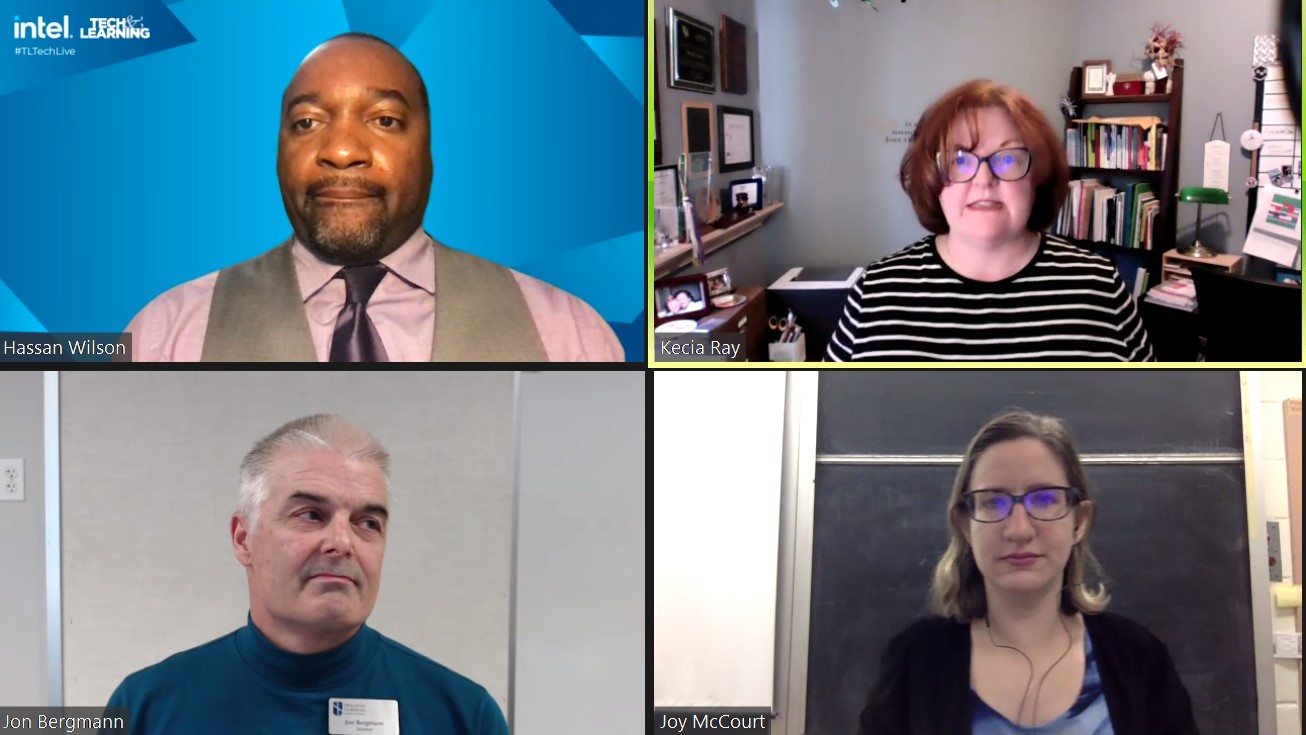Flipping Virtual Classrooms for More Impact
Flipping virtual classrooms can help maximize teaching time and resources

Flipped learning has been an effective practice since the early 2000s and today we can apply these practices in a new way with synchronous and asynchronous learning environments online.
During this recent Tech & Learning virtual roundtable hosted by Dr. Kecia Ray, a panel of experts shared their successes implementing this model to make the most of online and offline learning time and consistently deliver meaningful instruction.
Watch the on-demand version here
Key Takeaways
Flipped in the time of remote learning. “If you’re teaching hybrid or remote, you’re probably struggling,” said Jon Bergmann, teacher and active Learning Advocate at Houston Christian High School, and one of the founders of Flipped Learning, which inverts the traditional class model by presenting concepts before a lesson starts.
When the pandemic hit, Bergman and his flipped learning team realized that the most important thing is connections with students and the physical time spent with them. “So what's the best use of your face-to-face class time?” Bergman said. “I'm going to argue it's not you standing up and then introducing new content, it's giving students the new content first and allowing them to apply, analyze, and evaluate it.”
The mantra of flipped learning is that you can reach every student in every class every day, said Bergman. So if you have less synchronous time, you need to provide more time with your students one-on-one to work on the hard stuff, and flipped mastery learning, in particular, accommodates that.
“Flipped learning teachers have been preparing for the pandemic for the past 10 years,” Bergman said. “It's really a great way to amplify your reach to teach.”
Tools and ideas to transform education. Sign up below.
Working smarter. “If you told me eight months ago that I’d be part of a presentation on strategies for remote and virtual learning, I would’ve laughed and laughed because I’d never been interested in virtual teaching,” said Joy McCourt, a secondary teacher at Sir Wilfrid Laurier Collegiate Institute in Toronto.
Like many educators, McCourt was overwhelmed at the start of the pandemic with remote learning products and platforms. “We had like 25 different websites and logins to manage, and it just became dizzying,” she said. Streamlining to just the tools that are useful and can be used for multiple purposes is key to maximizing the impact. It’s also good to check around online before reinventing the wheel because there are lots of excellent remote teaching resources already out there and being shared. Game-based learning, such as Class Craft, can also help build teamwork and community.
During remote and flipped learning, providing one consistent place for students to check for work is also key, McCourt said. Feeling isolated also continues to be a problem for students, so consider building care and community into your class so students can check in regularly and stay connected. For example, McCourt created a simple “How are you doing?” survey form with a rating scale.
Poor video conferencing also continues to be an issue for everyone. McCourt recommended trying to optimize the setup and equipment for remote and flipped teaching, including a separate microphone, document camera, proper lighting, and a capable computer.
10 tips for flips. “Flipped learning is more than just using videos or other media to deliver content--it’s a mindset, a framework, a way of thinking,” said Hassan Wilson, Assistant Head of Upper School at Friends Seminary in New York City.
Hassan shared 10 tips for flipped, remote, hybrid, or even in-person learning.
- Video conferences should be reserved for interactions, while videos should be for to convey information.
- Use videos for a variety of purposes.
- Give more instructions on assignments than you would in a brick-and-mortar classroom. Consider supplementing written instructions with a short video.
- Provide a video overview and to-do list for the work within a week or unit.
- When using video to teach content, include supporting tasks: How to take notes with a template sheet (and model for students how to do this).
- When using video to teach content, include supporting tasks: Checks for understanding (such as using embedded questions in videos).
- When using video to teach content, include supporting tasks: Student clarifying questions (such as through discussion threads).
- When using video to teach content, include supporting tasks: Video feedback (such as by using survey questions).
- Even with videos, incorporate hands-on learning (for example, student-created videos can demonstrate evidence of task completion and learning).
- The right hardware is crucial to flipped and remote learning.
Lunch 'n Learn with Tech & Learning
We hope you can join us for these regular District Leadership Lunch ‘n Learn Roundtable series, hosted by Dr. Kecia Ray. In these events, districts from across the U.S. share their strategic plans, the challenges they are facing, and the creative solutions they are using to support students and teachers. Register for our upcoming events here.
More from T&L: Lunch 'n Learn roundtable recaps
Ray Bendici is the Managing Editor of Tech & Learning and Tech & Learning University. He is an award-winning journalist/editor, with more than 20 years of experience, including a specific focus on education.
